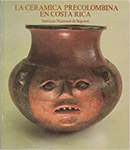The Volunteer Who Discovered the First Area of Human Occupation in Costa Rica
by Jeremiah Norris (Colombia 1963-65)
Michael Snarskis attended the University of Iowa, graduating in 1964, then Yale University majoring in Spanish in 1967. After one year of law school, he joined the Peace Corps as a Volunteer in Costa Rica, 1967-69. There his interest in archeology was awakened and on his return to the U. S. he studied archelogy at Colombia University. After three years of field work in Costa Rica, he received a Ph. D. in 1978 with a dissertation on the Archaeology of the Central American Watershed of Costa Rica.
When he received his doctoral, there was almost no scientific archeology in Costa Rica. Michael founded the archeology department at the Museo National de Costa Rica in San Jose, Costa Rica, and directed it for ten years. As an archeologist and conservationist, Michael worked for the Tayutic Foundation which seeks to preserve and explore the Guayabo National Monument. Both the Jade Museum and the Gold Museum in San Jose had Michael as their technical advisor.

Michael Snarskis
Michael founded and edited VINCULOS: Revisita de Antropologia del Museum National de Costa Rica, a professional journal that won awards for scientific excellence and which continues to be published today, one of the longest runs for a scientific journal in Latin America. From 1986 to 1997, Michael took on an international mission job as chief editor and head of publications for the Inter-American Institute for Cooperation on Agriculture (IICA).
Basically, Michael founded the scientific study of archaeology in Costa Rica. At that time, almost all artifacts available to collectors were shorn of their provenance and historical significance by huaquero (looters), whom he described as “the tomb-robbers” who have made such studies more difficult”.

La Ceramica Precolombina en Costa Rica
In excavation projects that he directed, one led to the discovery of the first Paleoindian quarry and workshop site some 12,000 years old—the first of its kind known, and with both Clovis and fishtail fluted spear points, diagnostics of Paleoindian hunters in North and South America respectively. Another brought to light the first clear house foundations found in the lowland Caribbean rain forest, from about the first century AD. While still another found the oldest known pottery in the country, two very different complexes from around 2000 BC.
The overlapping of northern (Mesoamerican) and southern (northern South American) cultural spheres of influence revealed by Michael’s work make Costa Rican archaeology remarkably rich and varied, and of great importance for understanding cultural diffusion in the region.
Michael Snarskis died at his home in Costa Rica on January 24, 2011.
Given Michael’s significant contributions in bringing to contemporary light the extensive archaeology of Lower Central America, he earned a well-deserved Profile in Citizenship.
No comments yet.
Add your comment